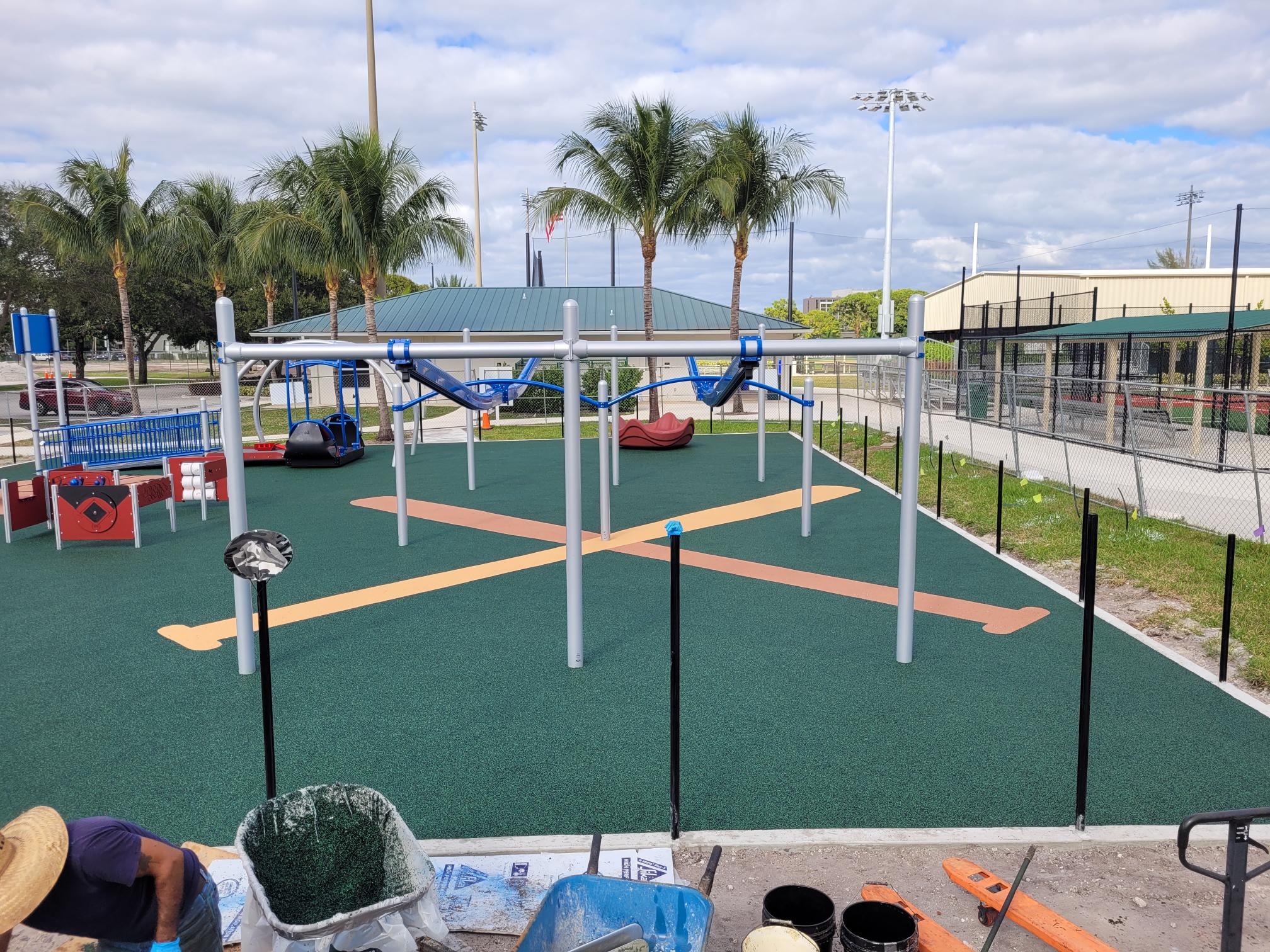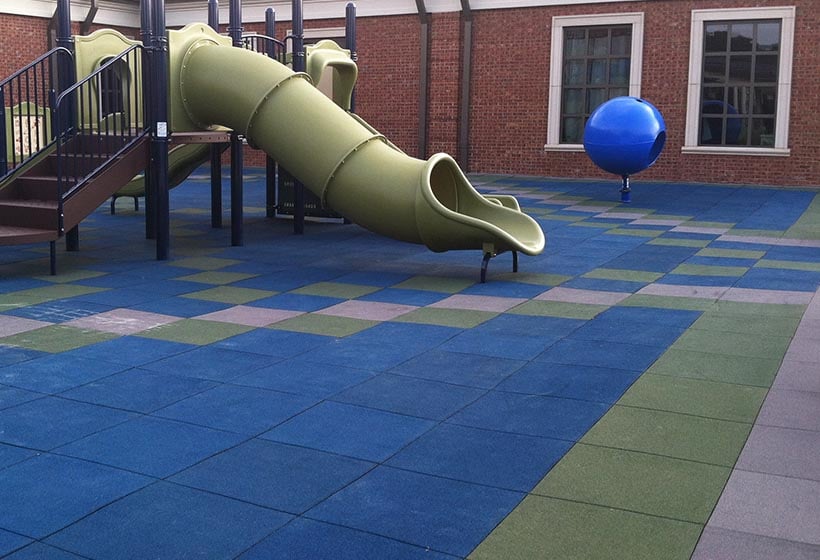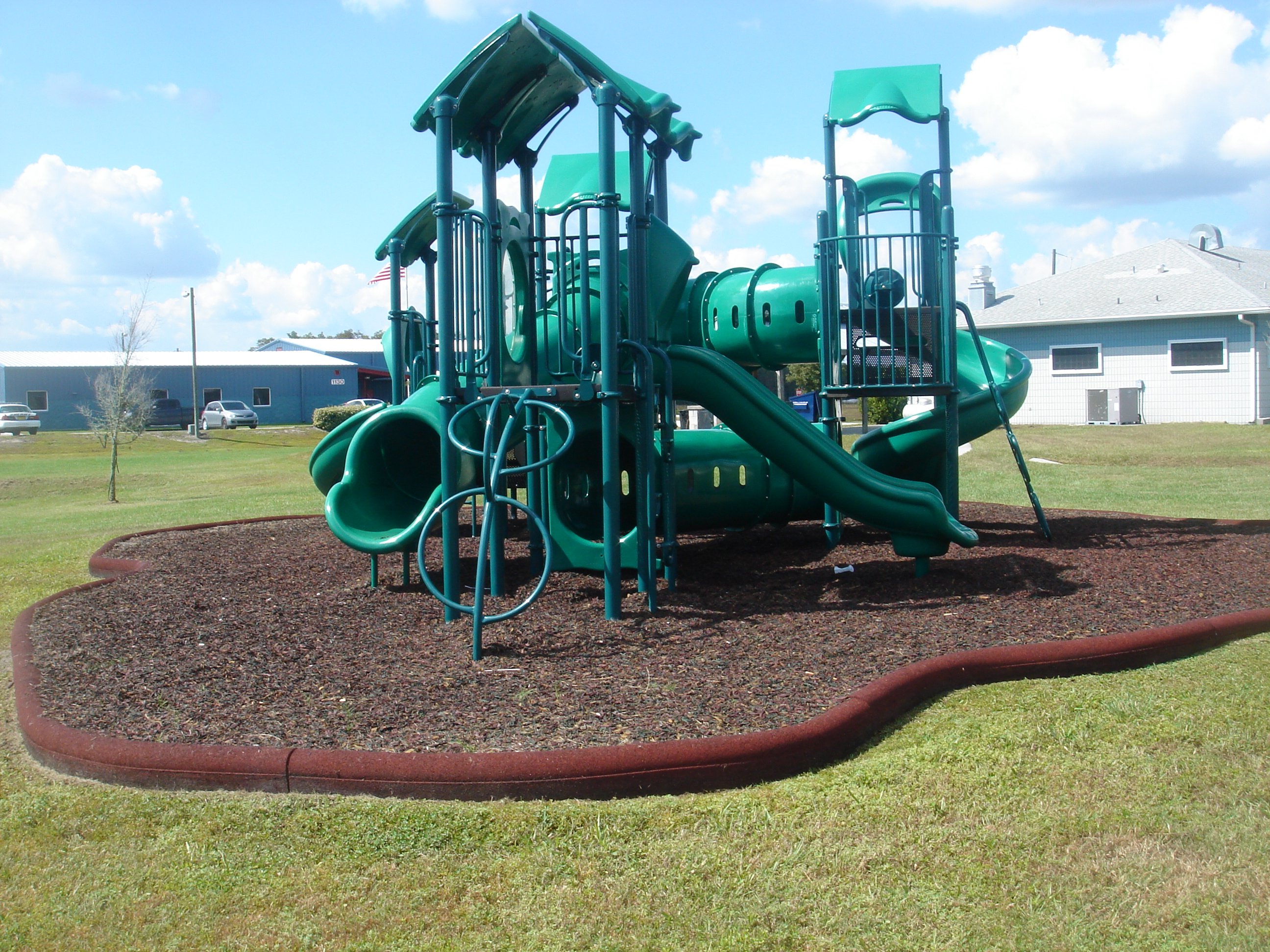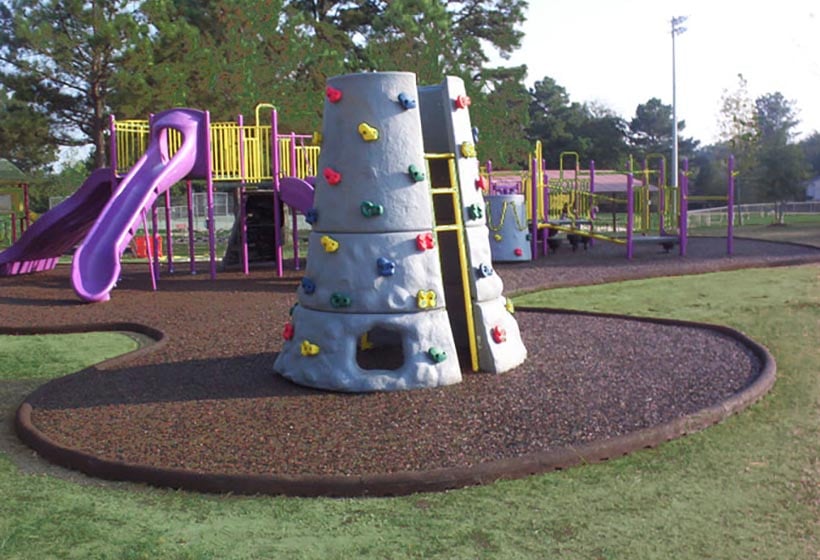Poured-in-place rubber is quickly becoming the most preferred surfacing material. It could be the solution that you have been searching for, and this guide will provide you with all the information that you need to know about this innovative surfacing option.
What is Poured-in-Place Rubber?
Poured-in-place rubber is an innovative surfacing solution that is created from recycled rubber materials. The rubber granules are mixed and bonded together in order to allow for a seamless pour, and multiple layers can allow you to achieve the look and functionality that you desire for your space.
Many community organizers, project managers and landscape designers prefer poured-in-place rubber over other surfacing solutions. Poured rubber offers the advantage because:
- It is low maintenance.
- It lasts for many years without the need for continual resurfacing.
- It is a safe surfacing solution.
- It is ADA compliant, allowing for accessible recreational spaces.
- It prevents slip and fall accidents.
- It can be installed in both indoor and outdoor recreational areas.
Installation Process
The poured-in-place rubber installation process is quick and simple, and is completed in the following steps:
- Site preparation — Before the poured-in-place rubber can be installed, the site must be clear and level. In some cases, the installer will prepare the site for you, but you may be required to assist with removing debris and landscaping from the site prior to installation.
- Mixing and pouring — Once the site is ready, the poured-in-place rubber solution will be created. Rubber granules are mixed together with a bonding agent, ultimately creating a solution that can be poured in a designated area. Once the mixture is ready, the rubber is poured into the area according to the design details.
- Smoothing and finishing — The base layer is smoothed out by the installers, and a protective surface is applied in order to finish the application.
- Curing and Drying — Curing and drying typically takes about 24 hours. If you are installing poured-in-place rubber in an outdoor area, you may have to schedule your installation based on the weather conditions. It's important to have consistently dry weather within a specific temperature range in order for the poured-in-place rubber to dry and cure properly.
Maintenance and Care
Poured-in-place rubber is considered to be one of the easiest surfacing materials to maintain. It does require regular cleaning, but that largely consists of removing debris from the area and ensuring that there are no tripping hazards on the surface.
For the most part, most communities and organizations that use poured-in-place rubber find that they can do a regular weekly cleaning and easily maintain the surface. Sealant can be applied once a year or every few years in order to protect the surfacing and extend its lifespan.
Cost Considerations
Initially, poured-in-place rubber may seem like the more expensive option, but there are several cost considerations that you should make before you decide:
- Poured-in-place installation costs may vary based on the size of your project and the area that it is located. In some cases, poured-in-place rubber surfacing installation may be less than installing another type of playground surfacing material.
- Poured-in-place rubber will typically add value to your space, ultimately increasing your return on your investment. At athletic facilities, for example, it is the preferred surface among those who will be using your facility. Poured-in-place rubber may drive more business to your facility, which can help off-set the cost of this surfacing solution.
- Minimal maintenance is required after you have installed a poured-in-place rubber surfacing solution. You will not have to hire designated staff members to maintain it, nor will you have to replenish the surfacing material in the months and years ahead. This can result in long-term cost savings that help offset the initial cost to purchase poured-in-place rubber.
Safety and Environmental Considerations
Poured-in-place rubber is not only the safest surfacing solution, but it's also the most sustainable option for your playground or recreational facility.
These are a few safety and environmental considerations that you should keep in mind:
- Poured-in-place rubber surfaces can be designed to accommodate specific fall height requirements, offering protection from falls of up to 10 or 12 feet.
- Poured-in-place rubber is slip resistance, which helps to prevent unexpected falls from occurring when the surface is wet. This is particularly important if you are installing poured-in-place rubber in an outdoor environment.
- Poured-in-place rubber is created from recycled rubber materials, which helps to reduce its overall carbon footprint.
- Poured-in-place rubber stays in place, which also helps protect the local landscape from additional debris and pollution.
Your poured-in-place rubber surface can be customized to adhere to all local regulations and safety guidelines, allowing you to feel confident in the final outcome of your project.
Applications of Poured-in-Place Rubber
Poured-in-place rubber is commonly used in the following areas:
- Playgrounds and Recreational Facilities — Poured-in-place rubber is the ideal solution for playground and recreational facilities, largely because these are often high-traffic areas where a durable surface is necessary. In addition, poured-in-place rubber is a firm, stable surfacing solution, which allows wheelchair users to easily navigate the surface. In general, it is considered to be one of the safest surfacing options for playgrounds and recreational areas.
- Athletic Tracks and Sports Surfaces — Athletic tracks and sports surfaces require special consideration when choosing a surfacing solution. Poured-in-place rubber is an excellent option for these areas because its appearance can be fully-customized, it can help improve the performance of the athletes while simultaneously protecting them from injury, and it will last for many years to come.
Advantages of Poured-in-Place Rubber
More professionals are choosing poured-in-place rubber for their surfaces because of its many advantages. Here are a few good reasons to consider poured-in-place rubber for your safety surfacing:
Safe and Buoyant
The two-layer design of poured-in-place rubber creates a buoyant surface that offers some give when users are stepping, running or falling onto the surface. This buoyancy actually protects those who are using the space, and can prevent a more serious injury from occurring in the event of a fall. It also can help reduce the number of injuries that can be caused by walking or running on hard surfaces.
Durable and Weather-Resistant
Other popular surfacing solutions, such as natural wood mulch or rubber mulch, need to be reapplied seasonally in order to maintain depth and fall height requirements. These surfacing options also can easily be relocated or redistributed during wind, rain or other weather events.
Poured-in-place rubber, on the other hand, is much more durable and is resistant to weather. It does not need to be resurfaced or reapplied, and the bonded layer on top of the base layer protects it from sun, wind, rain and any other extreme weather event. Regardless of the climate in your local region, you will find that poured-in-place rubber is the most durable and reliable surfacing solution.
Customizable
The fact that poured-in-place rubber can be completely customized is one of the most appealing features of this surfacing solution. Whether you are working to design a new school playground or creating a track for the local community to enjoy, you will be able to select the colors and patterns that work for your project. At schools, for example, choosing school colors and inserting the mascot into the design is very popular. At playgrounds geared toward young children, primary colors and interesting designs make the space more inviting. The options are virtually endless, and it's easy to create a poured-in-place rubber surface that aligns with your vision and budget.
Low Maintenance
Poured-in-place rubber is a low maintenance surfacing option because:
- It does not need to be raked on a regular basis, compared to mulch surfacing.
- It will not need to be replenished in the future.
- Its design is both durable and weather-resistant, preventing unexpected repairs in the future.
For the most part, the only thing that is required to maintain poured-in-place rubber is to remove debris on a regular basis. While the initial cost to purchase poured-in-place rubber may be higher than other surfacing solutions, the lack of maintenance in the long-term makes it a cost-efficient option.
Where to Buy Poured-in-Place Rubber
For poured-in-place rubber solutions that are sustainable, affordable and beautiful, rely on Rubber Designs. Our poured-in-place rubber can be customized to meet your needs and fit your budget. Start a quote today.




